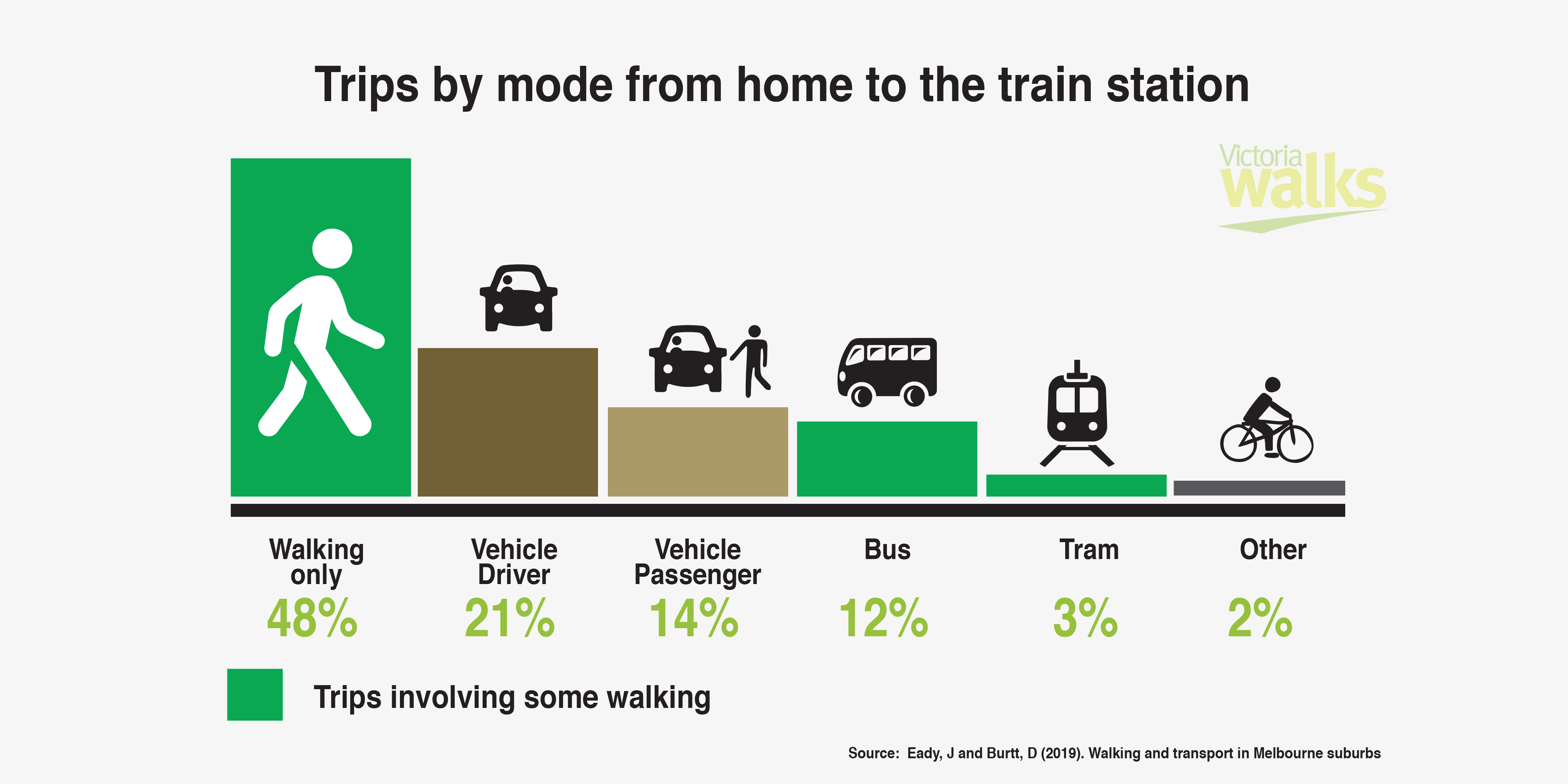Walking and transport in Melbourne suburbs

The report Walking and transport in Melbourne suburbs looks at how people travel around Melbourne, with a particular focus on the role of walking and access to suburban shopping centres. It includes analysis of household travel data captured through the Victorian Integrated Survey of Travel and Activity (VISTA) and a review of published and unpublished information.
The report, produced with the support of VicHealth, provides a wealth of material to give the strongest possible understanding of transport in Melbourne suburbs.
Key findings include:
- The VISTA analysis shows that 16% of trips in Melbourne are walked and an additional 8% have at least one walking stage (usually combined with public transport).
- Walking is critical for public transport, with almost half of passengers walking from home to railway stations (about a third come by car) and 94% of trips to bus and tram stops are walked.
- Generally speaking, the proportion of people walking to inner suburban centres is similar to those driving, with public transport the other key access mode. However, traders are more likely to drive. They subsequently have a tendency to substantially over-estimate the proportion of their customers who come via car and under-estimate the proportion who walk.
- To better understand travel in middle and outer suburbs and the impact of centre design on people’s mode choice, a range of selected centres were classified into mainstreet style strip shopping centres and compared to car-oriented shopping malls of similar size. It is 3.5 times more likely that a trip to a strip centre will be walked than to a car-oriented centre.